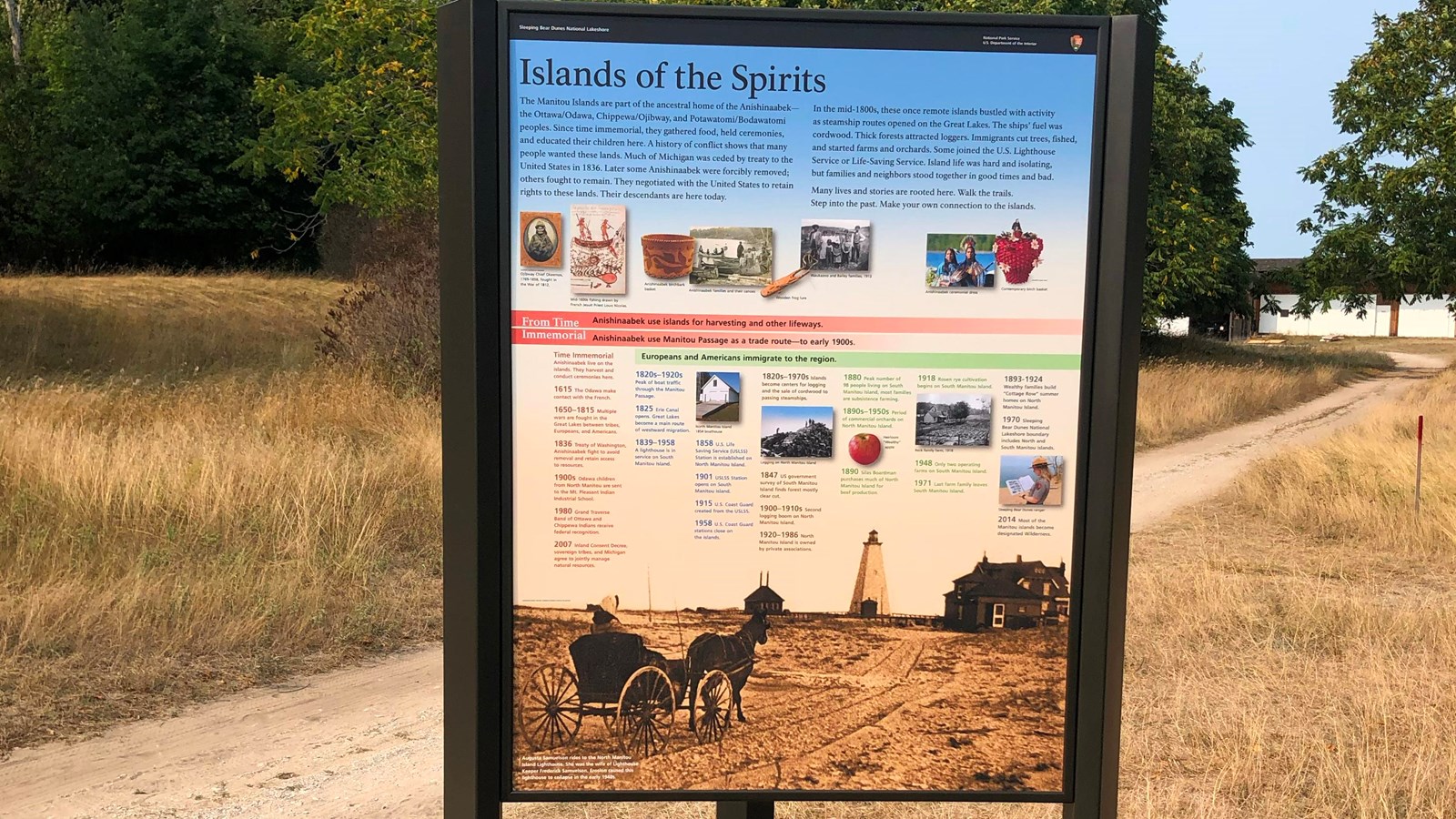Last updated: October 23, 2024
Place
Wayside: Islands of the Spirits (NMI)

The Manitou Islands are part of the ancestral home of the Anishinaabek. Since time immemorial, they gathered food, held ceremonies, and educated their children here. A history of conflict shows that many people wanted these lands. Much of Michigan was ceded by treaty to the United States in 1836. Some Anishinaabek were forcibly removed; others fought to remain, negotiating with the United States to retain rights to these lands. Their descendants are here today.
In the mid-1800s, these once remote islands bustled as steamship routes opened on the Great Lakes. Thick forests attracted loggers. Immigrants cut trees, fished, and started farms and orchards. Some joined the U.S. Life-Saving Service. Island life was hard and isolating, but families and neighbors stood together in good times and bad.
Many lives and stories are rooted here. Walk the trails. Step into the past. Make your own connection to the islands.
Anishinaabek History
Time Immemorial: Anishinaabek live on the islands. They harvest and conduct ceremonies here and use the Manitou Passage as a trade route to early 1900s.
1615: The Odawa make contact with the French.
1650–1815: Multiple wars fought in Great Lakes between tribes, Europeans, and Americans.
1836: Treaty of Washington, Anishinaabek fight to avoid removal and retain access to resources.
1900s: Odawa children from North Manitou are sent to Mt. Pleasant Indian Industrial School.
1980: Grand Traverse Band of Ottawa and Chippewa Indians receive federal recognition.
2007: Inland Consent Decree, sovereign tribes, and Michigan agree to jointly manage natural resources.
Maritime History
1820s–1920s: Peak boat traffic through Manitou Passage.
1825: Erie Canal opens. Great Lakes become a main route of westward migration.
1839–1958: A lighthouse in service on South Manitou Island.
1858: U.S. Life-Saving Service (USLSS) Station established on North Manitou Island.
1901: USLSS Station opens on South Manitou Island.
1915: U.S. Coast Guard created from USLSS.
1958: U.S. Coast Guard stations close on islands.
Logging History
1820s–1970s: Islands become centers for logging and sale of cordwood to passing steamships.
1847: US government survey of South Manitou Island finds forest mostly clear cut.
1900–1910s: Second logging boom on North Manitou Island.
1920–1986: North Manitou Island owned by private associations.
Agricultural History
1880: Peak number of 98 people living on South Manitou Island.
1890s–1950s: Period of commercial orchards on North Manitou Island.
1890: Silas Boardman purchases much of North Manitou Island for beef production.
1918: Rosen rye cultivation begins on South Manitou Island.
1948: Only two operating farms on South Manitou Island.
1971: Last farm family leaves South Manitou Island.
Recreational History
1893-1924: Wealthy families build summer homes on North Manitou Island.
1970: Sleeping Bear Dunes National Lakeshore boundary includes North and South Manitou islands.
2014: Most of Manitou islands become designated Wilderness.
